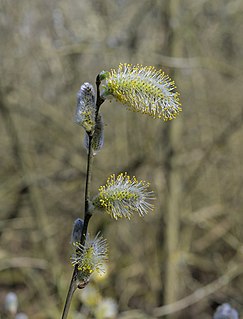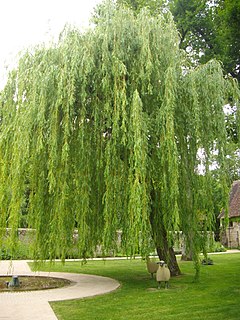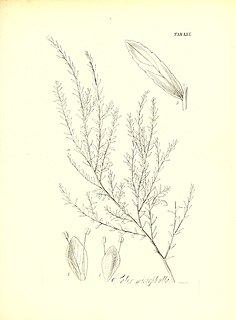

Michael Winstone (born 1958, Toronto) is an English sculptor.


Michael Winstone (born 1958, Toronto) is an English sculptor.
Winstone studied Fine Art at Leeds Polytechnic from 1978 to 1981 and sculpture at the Royal College of Art from 1981 to 1984. [1]
His early work encompassed a wide range of traditional materials completing commissions for rural and city spaces. [2] [3] He was Artist in residence Grizedale Forest 1984 [4] [5] and Artist in Residence Gateshead 1985. [2] [6]
In 1992 his focus shifted to creating art mainly within the digital domain. This included a wide range of digital media, 2D and 3D digital sculptures and prints as well as 4D time-based installation and video animation. At the time he called this work "Sculputer" an acronym of the word sculpture and computer, it is now widely referred to as Digital sculpture.
The sculptures examine the human body within the context of the family structure, its relationship with nature, in particular the anatomy of trees and their architecture. Using various CAD programs, Lightwave 3D Modo 3D-Coat Zbrush, Simple fractal elements are displaced and repeated to create complex organic structures that have self-similarity in anatomic texture, body and construction. The results are then printed to scale using 3D Printing technology. [7]
Each digital work is based on a specific tree. The title is the GPS coordinates of where that tree grew or is growing. Data from its bark is scanned into the computer. The model preserves the bark striations and growth formations of real trees that no longer exist, as well as current trees that may be lost in the future. The elements within the work grow in the same way human, animal, and plants tissues regenerate as substrates. They are informed and infused with environmental forces which then grow into complex intertwined sculptural structures. [8]
Major digital commissions include "41º40'00'’N.00º54'30'’W. (White Willow Tree, Salix alba)" an eight-metre digital print cast in bronze for the Zaragoza Expo 2008. [9]

Willows, also called sallows and osiers, from the genus Salix, are around 400 species of deciduous trees and shrubs, found primarily on moist soils in cold and temperate regions of the Northern Hemisphere.

The Angel of the North is a contemporary sculpture by Antony Gormley, located in Gateshead, Tyne and Wear, England. Completed in 1998, it is believed to be the largest sculpture of an angel in the world and is viewed by an estimated 33 million people every year due to its proximity to the A1 and A167 roads and the East Coast Main Line. The design of the Angel, like many of Gormley's works, is based on Gormley's own body. The COR-TEN weathering steel material gives the sculpture its distinctive rusty, oxidised colour. It stands 20 metres (66 ft) tall with a wingspan of 54 metres (177 ft) – which is larger than a Boeing 757 aircraft. The vertical ribs on the body and wings of the Angel act as an external skeleton which direct oncoming wind to the sculpture's foundations, allowing it to withstand wind speeds of over 100 miles per hour (160 km/h).

Salix alba, the white willow, is a species of willow native to Europe and western and central Asia. The name derives from the white tone to the undersides of the leaves.

Salix caprea, known as goat willow, pussy willow or great sallow, is a common species of willow native to Europe and western and central Asia.

Salix purpurea, the purple willowpurpleosier willow or purple osier, is a species of willow native to most of Europe and western Asia north to the British Isles, Poland, and the Baltic States.

Salix × fragilis, with the common names crack willow and brittle willow, is a hybrid species of willow native to Europe and Western Asia. It is native to riparian habitats, usually found growing beside rivers and streams, and in marshes and water meadow channels. It is a hybrid between Salix euxina and Salix alba, and is very variable, with forms linking both parents.

Salix babylonica is a species of willow native to dry areas of northern China, but cultivated for millennia elsewhere in Asia, being traded along the Silk Road to southwest Asia and Europe.

The blue willow beetle, formerly Phyllodecta vulgatissima, is a herbivourous beetle of the family Chrysomelidae. It is dark with a metallic sheen that ranges from a blue color to bronze. It is distinguished from P. vitellinae by the latter more commonly displaying bronze coloration. European Phratora species can be distinguished based on morphology of female genitalia. The larvae undergo three instar stages from hatching to pupation. This beetle is found throughout Europe and Scandinavia, and occurs in China.

Salix pentandra, the bay willow, is a species of willow native to northern Europe and northern Asia. The scientific name refers to the male flowers having five stamens. The English name derives from the resemblance of the leaves to those of the bay laurel; other common names include bay-leaved willow and laurel willow. Its glossy leaves make it more decorative than many other willows, so it is often planted as an ornamental tree.

Salix triandra, with the common names almond willow, almond-leaved willow or black maul willow, is a species of willow native to Europe and Western and Central Asia. It is found from south-eastern England east to Lake Baikal, and south to Spain and the Mediterranean east to the Caucasus, and the Alborz Mountains. It usually grows in riparian habitats, on river and stream banks, and in wetlands.

Anacampsis populella is a moth of the family Gelechiidae, which is native to Europe and has been accidentally introduced to North America. It was first described in 1759 by Carl Alexander Clerck, a Swedish entomologist. The type specimen is from Sweden. The foodplants of the larvae are poplars and willows.

Batrachedra praeangusta is a moth of the family Batrachedridae which is native to Europe. It is also found in North America. It was first described by Adrian Haworth in 1828 from the type specimen found in England. The foodplants of the larvae are poplars and willows.

Salix taxifolia, the yewleaf or yew-leaf willow, is a species of willow native to all of southern Mexico, also Pacific Coast regions, north to Sinaloa, and in the south Pacific Coast of Mexico into central Guatemala. Scattered populations are also reported from northern Mexico and from the US states of Texas, New Mexico, and Arizona.
Rabdophaga strobilina is a gall midge which forms galls on the buds of some species of willow. It was first described by Hermann Loew in 1850.
Rabdophaga albipennis is a gall midge which forms galls on the shoots of white willow.
Euura auritae is a species of sawfly belonging to the family Tenthredinidae. The larvae forms galls on willows. It was first described by Jens-Peter Kopelke in 2000. E. auritae is one of a number of closely related species which is known as the Euura atra subgroup.
Euura weiffenbachiella is a species of sawfly belonging to the family Tenthredinidae. The larvae forms galls on creeping willows. E. weiffenbachiella is one of a number of closely related species which is known as the Euura atra subgroup.
Rabdophaga clausilia is a gall midge which, depending on the source, forms galls on the leaves of willows, or is an inquiline living in the galls of a Rabdophaga species, or a predator. It was first described by Johann Jacob Bremi-Wolf in 1847.
Euura testaceipes is a species of sawfly belonging to the family Tenthredinidae. The larvae feed within the leaf-stalk (petiole), or midrib of a leaf, on willows forming a gall. The sawfly was first described by Carl Gustav Alexander Brischke in 1883. E. testaceipes is one of three closely related species known as the Euura amerinae species subgroup. The other members of the group are E. amerinae and E. venusta

Bactericera albiventris is a hemipteran bug in the family Triozidae, which causes galls on the leaves of willows. It was first described by Arnold Förster in 1848.
Publications and television